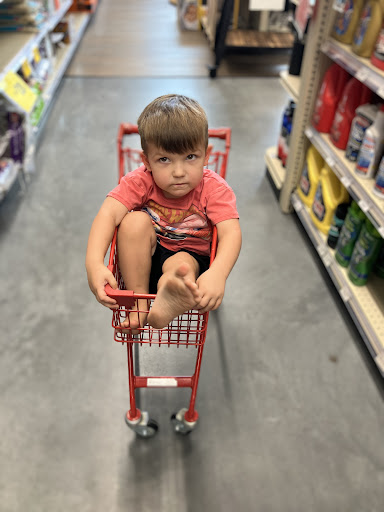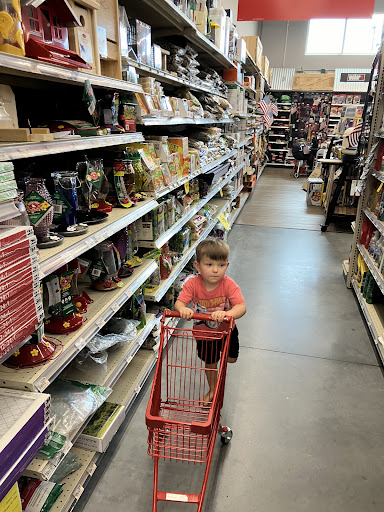Introduction
When it comes to connecting with nature, few things are as simple and satisfying as setting up a bird feeder in your backyard. But what makes the perfect bird feeder? Whether you’re a long-time bird enthusiast or a newcomer looking to invite some feathered friends into your space, here’s what you need to know:
- Types of bird feeders: Tube, Suet, Hummingbird, Platform.
- Best bird seed: Peanuts, seeds, mealworms.
- Placement tips: Safe from predators, visible, accessible.
- Seasonal considerations: Winter, migration periods, summer feeding.
- Maintaining feeders: Regular cleaning, refilling.
At Lowcountry Ace Hardware, we understand the joy of attracting birds to your home. Our team is dedicated to helping you find the perfect bird feeder and providing expert advice to ensure your bird-watching experience is successful.
With my experience in bird feeding and conservation, I’m here to guide you through choosing the best bird feeder. Let’s make sure you and the birds enjoy every moment.
Why Bird Feeders Matter
Bird feeders are more than just garden decorations. They play a crucial role in supporting local bird populations and fostering a closer relationship with nature.
Benefits of Bird Feeders
1. Supporting Bird Health:
Bird feeders provide essential nutrients, especially during harsh weather conditions when natural food sources are scarce. Lowcountry Ace experts emphasize that feeding birds, particularly in winter, helps them survive cold snaps and energy-draining activities like migration.
2. Pest Control:
Birds are natural pest controllers. By attracting insect-eating birds, you can reduce the number of pests in your garden. This natural pest control helps maintain a healthy garden ecosystem.
3. Educational Opportunities:
Bird feeders offer a front-row seat to observe different bird species, their behaviors, and feeding habits. This can be a fantastic educational tool for children and adults alike, fostering a love for wildlife and nature.
4. Mental Well-being:
Watching birds can be incredibly relaxing and therapeutic. Studies have shown that engaging with nature, even in small ways like bird-watching, can reduce stress and improve mental health.
Bird Feeders and Backyard Ecology
Bird feeders contribute to a balanced backyard ecosystem. Here’s how:
1. Biodiversity:
Feeding birds helps support a diverse bird population. Different types of feeders and food attract various species, contributing to a richer biodiversity in your garden. For instance, tube feeders attract small birds like finches, while platform feeders can bring in larger birds like cardinals.
2. Pollination:
Some birds, like hummingbirds, are pollinators. By providing nectar feeders, you support these important pollinators, which in turn helps your garden thrive.
3. Seed Dispersal:
Birds often carry seeds from the feeders to other parts of your yard or even further afield. This natural seed dispersal helps with plant propagation and maintaining a healthy plant population.
4. Predator-Prey Balance:
By attracting birds that are natural predators of insects and small rodents, you help keep these populations in check. This balance is crucial for a healthy backyard ecosystem.
Real-life Impact
At Lowcountry Ace, we’ve seen how bird feeders can transform a backyard. One customer shared how their new bird bath, recommended by our team member Kati, not only attracted more birds but also created a serene spot for relaxation in their garden. Another customer noted how their vintage barn weather vane, mounted with a sturdy bracket, has become a focal point for bird activity.
In summary, bird feeders are a simple yet powerful way to support bird populations, enhance your garden’s biodiversity, and bring joy and educational opportunities to your home.
Next, let’s dive into the different types of bird feeders and how to choose the right one for your needs.
Types of Bird Feeders
Bird feeders come in various styles, each designed to attract different bird species and accommodate specific types of bird food. Understanding the differences can help you choose the best feeder for your backyard.
Tube Feeders
Tube feeders are cylindrical and typically have multiple feeding ports. They are great for small birds like finches, chickadees, and sparrows.
Droll Yankees 18-inch Onyx Mixed Seed Tube Bird Feeder
This feeder is perfect for offering a variety of seeds, such as sunflower and safflower. Its sleek design and multiple feeding ports make it a favorite among backyard bird enthusiasts.
Droll Yankees 15-inch Sunflower Tube Feeder
Specifically designed for sunflower seeds, this feeder attracts a wide range of birds. Its durable construction ensures it can withstand harsh weather conditions.
Droll Yankees Onyx Clever Clean Finch Magnet
This feeder is a magnet for finches, thanks to its small feeding ports that dispense Nyjer seeds. The easy-to-clean design makes maintenance a breeze.
Suet Feeders
Suet feeders are designed to hold suet cakes, which are high-energy food blocks made from animal fat and other ingredients. These feeders attract insect-eating birds like woodpeckers, nuthatches, and chickadees.
Wild Birds Unlimited EcoTough Tail Prop Suet Feeder
This feeder is eco-friendly and durable. It features a tail prop to help woodpeckers balance while they feed, making it a popular choice for attracting these beautiful birds.
Hummingbird Feeders
Hummingbird feeders are specialized feeders that hold sugary nectar, which mimics the natural nectar found in flowers. These feeders attract hummingbirds, known for their iridescent feathers and rapid wing beats.
Aspects 367 HummZinger Ultra
This feeder is designed to attract hummingbirds with its bright red color and easy-to-fill nectar reservoir. The built-in ant moat keeps pesky insects away from the nectar.
Platform Feeders
Platform feeders are simple, flat surfaces where you can place a variety of foods, including seeds, fruits, and even mealworms. They are versatile and attract a wide range of bird species.
Platform feeders offer a communal dining experience for birds like sparrows, doves, and even occasional mammals like squirrels. They are easy to clean and refill, making them a convenient option for bird enthusiasts.
By understanding the different types of bird feeders, you can make an informed decision on which one will best suit your backyard and the birds you wish to attract.
Selecting the Right Location
Choosing the right location for your bird feeder is crucial. It affects how safe, visible, and accessible it is for the birds. Let’s break down what you need to consider.
Safety
Safety should always come first. Place your bird feeder at least 10-12 feet away from bushes or trees. This distance helps prevent predators like cats from ambushing the birds.
Tip: Use a baffle or squirrel guard to keep squirrels and other critters from raiding the feeder.
Visibility
Visibility matters because birds need to see the feeder to use it. Place the feeder in an open area where birds can spot it easily. If you’re using a window feeder, choose a spot where birds can see it from multiple angles.
Fact: Birds are more likely to visit a feeder if they can see it from their perching spots.
Accessibility
Accessibility is key for both you and the birds. Make sure the feeder is easy to reach for refilling and cleaning. A feeder that is too high or in a tricky spot can make maintenance difficult.
Pro Tip: Consider placing the feeder near a window or patio so you can enjoy watching the birds up close.
By focusing on safety, visibility, and accessibility, you can create a welcoming and secure environment for your feathered friends.
Next, we’ll discuss how to adjust your bird feeding practices according to the seasons.
Seasonal Considerations for Bird Feeding
Bird feeding isn’t just a one-season activity. To keep your feathered friends happy and healthy year-round, it’s important to adjust your bird feeding practices according to the seasons. Here’s how:
Winter Feeding
Winter can be tough for birds. Food is scarce, and they need extra energy to stay warm. Providing high-fat foods like suet and sunflower seeds can help birds survive the cold months.
Tip: Use a suet feeder to offer high-energy food. Birds like woodpeckers and nuthatches love it!
Migration Season
During migration, birds travel long distances and need plenty of energy. Offering a variety of foods can help them refuel. Use a mixed seed tube feeder to provide different types of seeds.
Summer Feeding
In the summer, birds have more natural food sources, but that doesn’t mean they don’t appreciate a little extra. Use a hummingbird feeder to provide nectar for hummingbirds, or a platform feeder for seeds and fruits.
Tip: Try the Aspects 367 HummZinger Ultra for an easy-to-clean option that keeps nectar fresh.
By adjusting your bird feeding practices for each season, you can ensure that your backyard remains a haven for birds all year long.
DIY Bird Feeder Ideas
Creating your own bird feeder can be a fun and rewarding project. Here are a couple of easy DIY bird feeder ideas that you can try at home.
Wine Bottle Feeder
A wine bottle feeder is both stylish and functional. It’s a great way to recycle an old wine bottle and provide food for your feathered friends.
Materials Needed:
– Empty wine bottle
– Wooden base
– Metal or wooden dowels
– Birdseed
– Twine or wire for hanging
Steps:
1. Clean the Bottle: Make sure the wine bottle is thoroughly cleaned and dried.
2. Attach the Dowels: Secure the dowels to the wooden base. These will act as perches for the birds.
3. Fill the Bottle: Fill the wine bottle with birdseed.
4. Mount the Bottle: Attach the bottle to the wooden base, ensuring it is at an angle that allows the seed to flow out slowly.
5. Hang It Up: Use twine or wire to hang your new feeder in a suitable location.
This feeder can attract a variety of birds and adds a touch of elegance to your garden.
Wooden Frame Feeder
A wooden frame feeder is simple to make and easy to customize. It’s perfect for those who enjoy woodworking.
Materials Needed:
– Wooden planks
– Nails or screws
– Mesh screen
– Birdseed
– Paint or stain (optional)
– Hanging hardware
Steps:
1. Build the Frame: Cut the wooden planks to your desired size and nail or screw them together to form a rectangular frame.
2. Add the Mesh: Attach the mesh screen to the bottom of the frame. This will hold the birdseed while allowing rainwater to drain.
3. Paint or Stain: If desired, paint or stain the wooden frame to protect it from the elements.
4. Fill with Seed: Add birdseed to the mesh-lined frame.
5. Hang It Up: Use hanging hardware to place your feeder in a tree or on a hook.
This type of feeder is versatile and can be used to attract different bird species by varying the type of seed you use.
Enjoy Your DIY Projects
Creating DIY bird feeders is not only a fun project but also a great way to attract more birds to your backyard. Plus, it’s a fantastic way to get the whole family involved in bird-watching activities.
Next, we’ll discuss how to maintain your bird feeder to keep it clean and inviting for birds.
Maintaining Your Bird Feeder
Keeping your bird feeder in top condition is essential for attracting and keeping birds happy. Regular maintenance involves cleaning, refilling, and monitoring. Here’s how to do it right:
Cleaning
Clean your bird feeder regularly to prevent mold, bacteria, and disease. Dirty feeders can harm birds. Aim to clean your feeder every two weeks, and more often during wet weather.
Steps for cleaning:
– Disassemble the feeder: Take apart all removable parts.
– Soak in warm, soapy water: Use a mild detergent.
– Scrub with a brush: Reach all nooks and crannies.
– Rinse thoroughly: Ensure no soap residue is left.
– Dry completely: Prevent mold by drying all parts before reassembling.
Tip: Use a 9:1 water-to-bleach solution for a deep clean every few months. Rinse thoroughly afterward.
Refilling
Refill your bird feeder with fresh food regularly to keep birds coming back. Different birds prefer different seeds, so know your local bird species and their preferences.
Refilling tips:
– Check daily: Ensure the feeder isn’t empty.
– Keep it fresh: Discard old or damp seed.
– Store seeds properly: Use airtight containers to keep seeds fresh and pest-free.
Seasonal advice: Birds need more energy in winter, so keep feeders full. In summer, reduce the amount to avoid spoilage.
Monitoring
Monitor your bird feeder to ensure it’s safe and effective. Regular checks help you spot issues early.
Monitoring tasks:
– Check for damage: Look for broken parts or sharp edges.
– Watch bird activity: Notice if birds avoid the feeder; it might need cleaning.
– Observe seed levels: Adjust refilling frequency based on bird visits.
– Keep pests away: Use squirrel-proof feeders or baffles.
Pro tip: Place feeders in safe locations, away from predators and with good visibility.
By following these steps, you’ll create a welcoming environment for birds, ensuring they visit your feeder all year round.
Next, we’ll answer some frequently asked questions about bird feeders to help you get the most out of your bird-watching experience.
Frequently Asked Questions about Bird Feeders
Why won’t birds eat from my bird feeder?
If birds aren’t visiting your new bird feeder, don’t worry. It might just need an adjustment period. Birds take time to find new food sources.
Here are a few tips to help:
- Placement: Ensure the feeder is in a visible, safe location.
- Food Quality: Use fresh, high-quality birdseed.
- Patience: It can take days or even weeks for birds to feel comfortable with a new feeder.
Is it good to have bird feeders in my yard?
Absolutely! Bird feeders provide crucial support, especially during temperature extremes and migration periods.
Benefits include:
- Energy Needs: Birds get the extra energy they need for survival.
- Pest Control: Birds help manage insects in your yard.
- Nature Connection: Enjoy watching and learning about different bird species.
What is the easiest homemade bird feeder?
Creating a homemade bird feeder can be simple and fun. Two easy options are a wine bottle feeder and a wooden frame feeder.
Wine Bottle Feeder:
- Clean an empty wine bottle.
- Fill it with birdseed.
- Attach a small feeding tray at the bottle’s mouth.
- Hang it upside down in a secure spot.
Wooden Frame Feeder:
- Build a simple wooden frame.
- Attach a mesh or screen bottom for drainage.
- Add a roof to protect the seed.
- Place it on a pole or hang it from a tree.
Both options are quick to make and attract various birds to your yard.
Conclusion
Choosing the perfect bird feeder can make a huge difference in attracting a variety of birds to your backyard. It’s not just about feeding birds; it’s about creating a space where they feel safe and can thrive. From tube feeders to suet feeders, each type serves a specific purpose and attracts different bird species.
The location of your feeder is crucial. Place it where birds can easily see it but are also protected from predators. Seasonal changes also play a role in bird feeding. In winter, birds need extra energy, while in summer, they might just need a quick snack.
DIY bird feeders are fun to make and can be a great way to recycle materials like wine bottles and wood. Plus, they add a personal touch to your bird-feeding efforts.
Maintaining your feeder is essential. Regular cleaning and refilling ensure that the birds stay healthy and keep coming back.
If you still have questions, our helpful team at Lowcountry Ace is always here to assist you. We believe that bird feeding is a year-round activity that benefits both the birds and us. So, let’s keep the feeders full and enjoy the beauty and song of our feathered friends.
Happy bird feeding!
Lowcountry Ace Hardware: Your one-stop shop for home improvement. We offer quality products from trusted brands and expert advice from our experienced staff. Located on James Island, visit us for tools, hardware, fishing gear, power tools, building materials, grills & smokers, electrical and plumbing supplies, and more.
















